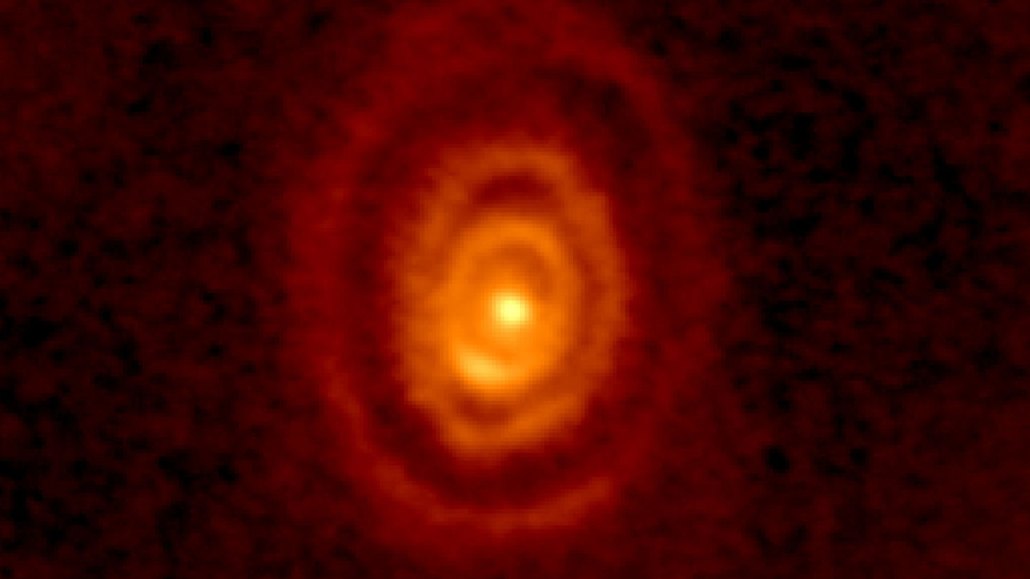
Three rings of ejected gas sail away from an aging star named V Hydrae, seen in this false-color radio image from the Atacama Large Millimeter/submillimeter Array in Chile.
R. Sahai, P-S. Huang, S. Scibelli, M.R. Morris, K. Hinkle, C-F. Lee
Huge rings of gas surround a large red star named V Hydrae, new images show, signaling its eventual transformation into a much smaller and bluer star.
“It’s definitely going through its metamorphosis,” says Raghvendra Sahai, an astronomer at NASA’s Jet Propulsion Laboratory in Pasadena, Calif. “Such ringlike structures have never been seen in any object like this before.”
Observations of the three concentric rings, all ejected from the star during the last 800 years, could help astronomers understand how giant stars lose mass toward the end of their lives and seed the cosmos with planet- and life-building elements.
Born roughly twice as massive as the sun and lying about 1,300 light-years from Earth, V Hydrae is what’s known as an asymptotic giant branch star. It once fused hydrogen in its core, as the sun does. But now it is a cool, brilliant, puffed-up star that alternately burns hydrogen and helium in shells around a carbon-oxygen core. Such stars cast lots of material into space.
“The processes by which this happens are not well-understood,” says Sahai, who has studied V Hydrae since the 1980s.
His team used the Atacama Large Millimeter/submillimeter Array of radio telescopes in Chile, also known as ALMA, to detect the three rings of gas. Beyond them lie three additional rings, which are fainter and seen only partially, Sahai and colleagues report in a paper submitted February 18 at arXiv.org.
The outermost complete ring now sits about 260 billion kilometers from the star, or 1,740 times as far as Earth is from the sun — more than 40 times Pluto’s distance from Earth. By measuring the speed at which the three complete rings are moving outward and their current distances from the star, the astronomers calculate that it cast them off about 270, 485 and 780 years ago.
It’s thought that another star orbits the main one every few hundred years on an elliptical orbit. When the companion dives in, it can trigger the giant star to cast more material into space, the team says.
The new image is striking and unusual, and it illustrates how a companion star enhances a giant star’s loss of mass, says Joel Kastner, an astronomer at the Rochester Institute of Technology in New York who was not part of the study. “Mass loss is very important because it’s how the elements of life get distributed from stars into the universe.”
Stars like V Hydrae forged most of the nitrogen in Earth’s air as well as much of our planet’s carbon, the basis for all terrestrial life (SN: 2/12/21; SN: 11/18/21). V Hydrae has so many carbon compounds in its atmosphere that it’s classified as a carbon star. It’s also one of the reddest stars known because those compounds as well as dust particles absorb its blue and violet light.
Sahai expects the star’s ejection of material to continue, but, he says, “it’s anybody’s guess as to how many more rings will be produced.”
When the star loses all of its atmosphere, probably many thousands of years from now, it will expose its hot core, whose ultraviolet light will set the cast-off material aglow, creating a beautiful bubble of gas known as a planetary nebula.
When the nebula dissipates, all that will remain of the magnificent red star will be a tiny blue one — a white dwarf — a little larger than Earth, plus innumerable life-giving elements floating through the Milky Way.







